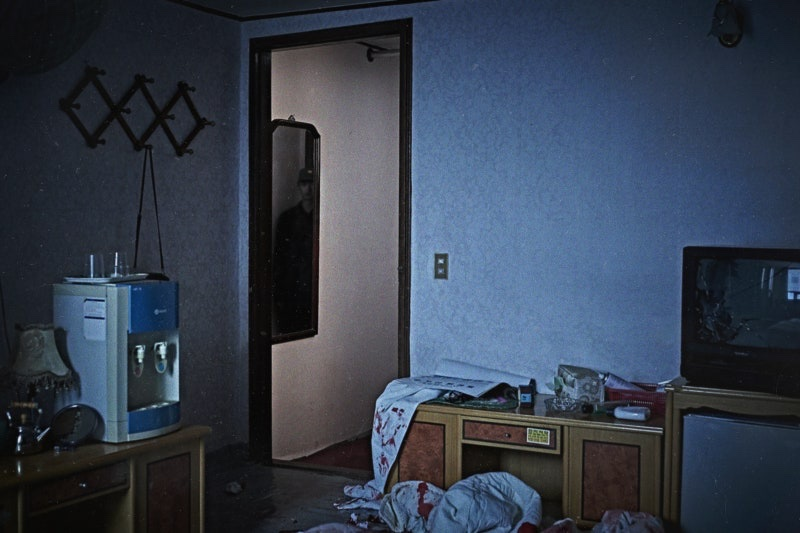Movie Review: Marui Video
- Jeongmin
- Jun 12
- 3 min read
If someone were to ask me about my favorite film, I would confidently respond with Marui Video. This horror film follows a team of journalists as they investigate a forbidden tape locked away in a government-controlled basement, known as Marui Video. The footage dates back to 1992 and is set in a hotel in Busan. Initially, the videotape displays intimate moments of couples, but it swiftly shifts to an unsettling murder scene filled with strange occurrences. For instance, a man suddenly begins to fill a burnt area, exhibiting violent behavior seemingly out of nowhere. As the investigation unfolds, paranormal activities begin to seep into the real world, transcending the confines of the footage.

Marui Video holds a modest rating of 5.0/10 on IMDb, 2.7/5 on Letterboxd, and 2.1/5 on Watchpedia, a prominent Korean movie review platform. These ratings indicate that the film did not find favor with a wide audience and was not particularly successful. However, my experience tells a different story. For me, what truly matters in evaluating a film is how effectively it creates an immersive world. Have you ever found yourself so engrossed in a movie that time seemed to vanish? Or, conversely, have you felt your attention dissolve partway through a film? When a movie is capable of capturing us in its world, time bends in a fascinating way. The creation of such an immersive experience hinges on numerous elements—realistic sound, visuals, and a compelling storyline, to name a few.
Personally, I find Marui Video exceptionally successful in crafting its unique world. My experience with the film might differ from others. When I first watched it, I expected a documentary, and that expectation persisted until the very end. This concept fascinated me, prompting me to note the techniques that elicited such a response.
First and foremost, the found footage style and diegetic visuals contributed significantly to its realism. The documentary-like quality of Marui Video, paired with the thoughtful presentation of its content, made it feel like an authentic experience. The diegetic use of cameras, including CCTV footage, reinforced the impression that we were witnessing real life unfold, rather than viewing a fabricated narrative.

Secondly, intentional visual imperfections added depth to the film. The shaky footage, abrupt zooms, blurred focus, and audio glitches gave the impression of real life rather than a meticulously crafted cinematic experience. Moreover, these imperfections enhanced the horror elements, effectively contributing to the film's immersive world.

Finally, the minimal use of background music stood out in Marui Video. Most films rely heavily on musical scores to enhance atmosphere and guide the audience’s focus. However, in this film, music was almost entirely absent except for moments of narration. This deliberate separation between narration and the real-world investigation delineated the boundary between fiction and reality. By minimizing background music, the film allowed viewers to concentrate on the raw footage, mirroring the experience of walking through life without the overlaid scores we often expect. This choice ultimately enriched the film’s immersive quality.
These components came together harmoniously to successfully create a compelling universe. That is the main reason Marui Video is my favorite film: it transported me to its world. When I eventually recognized the constructed nature of everything, I felt as if the film’s world was fracturing around me, and that, to me, exemplifies what a great film can do to its audience.

Comentários